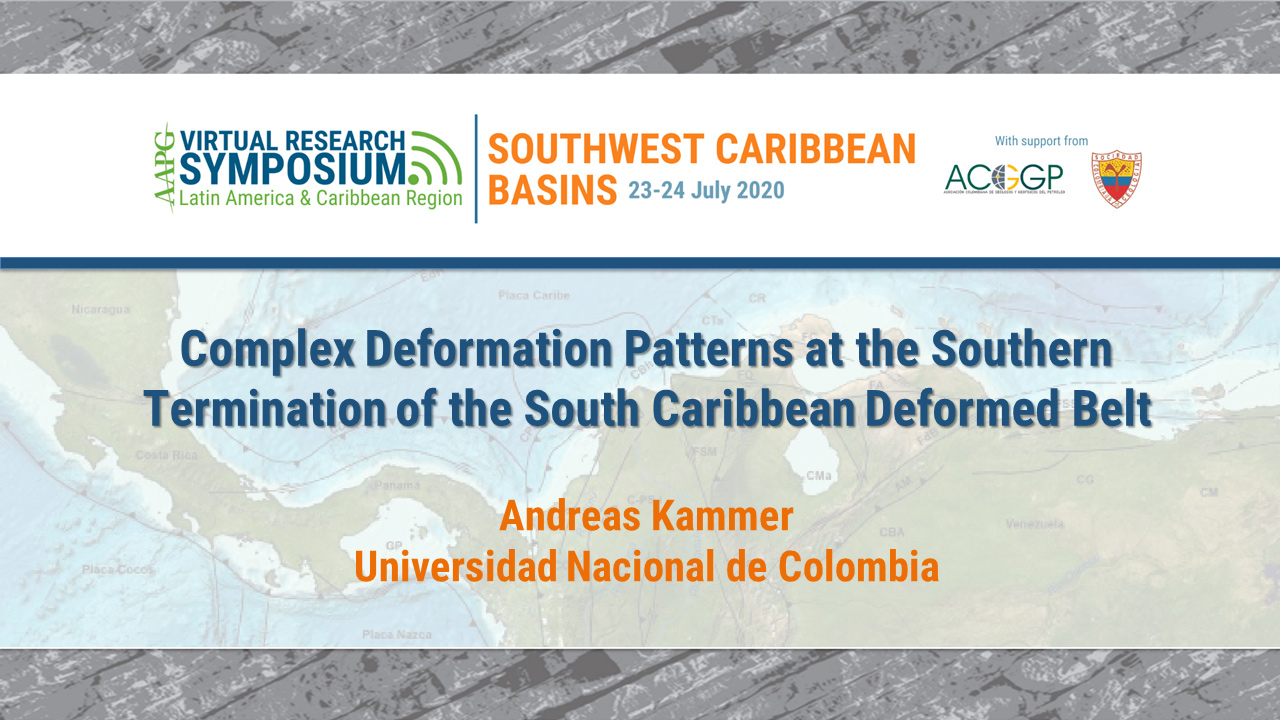
Summary
Authors: Andreas Kammer (presenter), Alejandro Piraquive Universidad Nacional de Colombia
Near its juncture with the Panamanian arc the South Caribbean Deformed Belt sways from an ENE margin-parallel strike into the NNW trending Northandean structural grain, and merges with the North Panama Deformed Belt. At this southern termination highly deformed Oligocene to Neocene platform sediments constitute the Sinu belt. They display a unique fold style, which consists of annular anticlinal trains outlining relatively sharp margins of broad elliptical synclines, some tens of km long. Near the western suture of this deformed belt these annular fold complexes are elongate and narrow, but track successively more open forms toward the eastern San Jacinto Belt. Annular antiformal rings may cut each other and their interference patterns display a structural younging toward the internal boundary of the fold belt. Mud volcanoes rooted within basal Oligocene muddy successions straddle the synclinal axes of these annular structures and occupy, only occasionally, their anticlinal borders. Based on these field observations, we suggest an inversion of initially broad, dome-like diapiric antiforms (or pillows), outlining the present synformal structures. A succeeding contractional deformation phase implied both a trend-parallel and perpendicular shortening and caused faults to cut through inherited rim synclines in such a way, that the formerly thickened anticlinal pillows partially peeled off and produced the observed interference patterns. In contrast to the W-vergent fold trains of the continental slope further north, a gravitational component should be dismissed for the formation of this subaerial belt. Instead, this overall constrictional fold pattern might have been caused by a crustal flow along the strongly arched oroclinal bend of the southern Sinu belt.
Bio:
Andreas Kammer, Universidad Nacional de Colombia
Andreas earned a BSc from the University of Bern and currently is a Professor and researcher at the Universidad Nacional de Colombia. Previously also worked at the Universidad Industrial de Santander.
Andreas is a member of Colombian Geological Society (SCG).
Please log in to view or purchase the video presentation